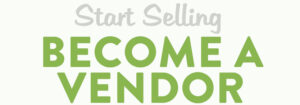Akinade Akinadeniyi’s journey into product design is quite unconventional. Coming from a background in trading forex and crypto, he had no prior graphics design experience, except for dabbling in tools like Canva.
The transition into design was a result of his growing interest in the intersection of technology and user experience, leading him to explore a new career path.
In this interview, Akinade Akinadeniyi shares a bit about his journey into product design, considering his background in trading forex and crypto:
Given your unique background, can you tell us about the places you’ve worked and the experiences you gained during your journey into product design?
Akinade Akinadeniyi: Of course. I initially started my career in trading, navigating the world of forex and crypto. As my interest in design grew, I delved into online courses, gradually transitioning into freelancing on small design projects.
Currently, I’m a product designer at a fintech startup, where my role involves combining my finance background with design skills to create user-friendly experiences for financial products.
It’s quite a leap from trading to product design. What is the work like as a product designer in a fintech company, especially considering your background?
Akinade Akinadeniyi: Working as a product designer in a fintech company is a dynamic experience. The financial industry places a strong emphasis on creating intuitive and seamless user experiences, and my role involves collaborating with diverse teams to achieve this.
The combination of my finance background and design skills allows me to bring a unique perspective to the creation of user-centric financial products, such as mobile banking apps and online platforms.
Let’s delve into your experience of becoming a product designer with no prior design experience. How did you navigate this transition, and which skills proved to be essential, given your trading background?
Akinade Akinadeniyi: The transition was indeed a learning curve. I started by taking online courses in design fundamentals, UX/UI, and prototyping tools.
Practical experience was crucial, so I took on freelance projects to build a portfolio. Networking and seeking mentorship were instrumental in gaining insights and guidance.
Given my trading background, the key skills that proved essential were proficiency in design tools like Sketch and Figma, a solid understanding of UX/UI principles, and the ability to think critically about user interactions in the financial space.
Acquiring specific skills is crucial. What skills would you recommend others focus on when transitioning to a product designer role, especially coming from a trading background?
Akinade Akinadeniyi: For those transitioning from trading to product design, building a foundation in graphic design is essential. Proficiency in design tools like Sketch, Figma, or Adobe XD is crucial.
Understanding UX/UI principles and conducting user research aligns well with creating user-centric financial products.
Additionally, the ability to translate complex financial concepts into intuitive designs is a valuable skill. Soft skills such as effective communication, collaboration, and adaptability are equally important in the design process.
Great insights! Can you elaborate on the hard skills that aspiring product designers should focus on developing, especially considering your unique background?
Akinade Akinadeniyi: Certainly. Hard skills include proficiency in design tools like Sketch, Figma, or Adobe XD.
A solid foundation in graphic design principles, including an understanding of color theory, typography, and layout, is crucial. Knowledge of prototyping tools and the ability to create interactive prototypes is vital.
Given my finance background, a deep understanding of financial concepts and the ability to visualize them in a user-friendly way is a valuable skill.
What about soft skills? What soft skills do you believe are necessary for success in the field of product design, particularly with your background in trading?
Akinade Akinadeniyi: Soft skills play a significant role, especially in a collaborative field like product design.
Effective communication is key, both in conveying design decisions and collaborating with cross-functional teams.
Adaptability and the ability to receive and incorporate feedback are crucial.
Given my trading background, the ability to distill complex financial information into user-friendly designs requires a high level of empathy and understanding. Collaboration and teamwork are essential for success in a design environment.
Valuable insights. Finally, what advice would you give to those seeking to develop their careers in product design, especially those with non-design backgrounds like trading? Where can they learn the necessary skills?
Akinade Akinadeniyi: For those with non-design backgrounds like trading, my advice is to start by building a strong foundation through online courses and practical projects.
Create a portfolio that showcases your ability to translate complex concepts into user-friendly designs.
Networking with professionals in the field and seeking mentorship can provide valuable guidance.
Don’t hesitate to take on freelance or volunteer projects to gain real-world experience.
As for learning, platforms like Udemy, Coursera, and design communities such as Dribbble and Behance offer valuable resources and connections with the design community.
Thank you, Akinade, for sharing your unique journey and insights into transitioning from trading to product design. It’s been a pleasure having you with us.
Akinade Akinadeniyi: Thank you for having me! I hope my experience can inspire others looking to make a similar career shift into product design, even from unconventional backgrounds like trading.
The post Interview with Akinade Akinadeniyi on his Journey from Trading to Product Design can be searched on searchng.ng & dotifi.comTech | Business | Economy.


